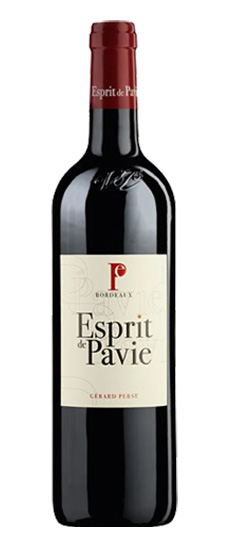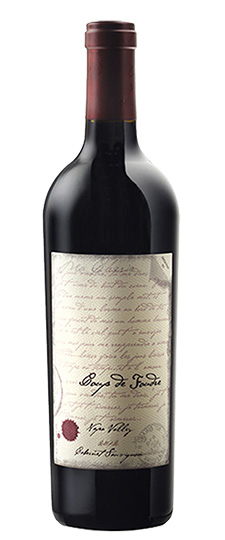Wine Score
Awards
Robert Parker’s Wine Advocate
Absolutely riveting, and even better than I predicted last year is the 2007 Cabernet Sauvignon – Grand Vin State Lane Vineyard. Made from 92% Cabernet Sauvignon, 5% Merlot, and the rest tiny dollops of Cabernet Franc and Petit Verdot (400 cases produced), in two weeks of tastings, this wine stood out as one of those singular efforts that it is impossible to get out of your mind and off of your palate. A flawless, seamless, profound example of Napa Cabernet, it exhibits an opaque purple color along with a gorgeous perfume of lead pencil shavings, cedar, creme de cassis, ink, flowers, and espresso roast. With phenomenal depth, a multidimensional personality, unbelievable length, and an impeccable integration of all its component parts, this stunning wine lasts and lasts, with a finish approaching a full minute. Give this profound wine 3-5 years of cellaring, and drink it over the following 25-30 years.
Kapcsandy Family Cabernet Sauvignon, Grand Vin
Winemaker Tasting Notes
The Kapcsándy’s (pronounced “Cup-chon-dy”) purchased the State Lane Vineyard in 2000 and replanted the entire parcel in 2001/2002 with recommendations from their 1st winemaker, Helen Turley and her husband, John Wetlaufer.
The vineyard is planted to 15 separate blocks of Cabernet Sauvignon, Merlot, Cabernet Franc and Petit Verdot, averaging 2,640 vines/acre. A new state-of-the-art wine-making facility was completed in September, 2005. The vineyard is farmed by Ilsley vineyard management. Beginning with the 2005 vintage, the lead winemaker is Denis Malbec, originally of Chateau Latour, Bordeaux. Sustainable farming is practiced, pests are controlled by birds of prey that inhabit an environment created by a wild-life expert in the field.
Robert Parker, Wine Advocate – 100 Points. “The bottled 2012s are all performing brilliantly. It was a large, but not excessive crop with a consistently warm growing season that never suffered the heat spikes Napa often experiences. The 2012 Cabernet Sauvignon Grand Vin State Lane Vineyard is the greatest example of this cuvée since the 2007. Bottled without fining or filtration, this blend of 99% Cabernet Sauvignon and 1% Merlot tips the scales at 14.1% natural alcohol. There are 320 cases. The Kapcsandys have hit the bull’s eye with this beauty. A stunning set of aromatics consisting of white chocolate, blackcurrant liqueur, cedarwood, graphite, incense and melted licorice is followed by a beautifully integrated, seamless, full-bodied classic. With terrific fruit purity, a touch of spice, and a voluptuously textured, superpure, extravagant mouthfeel, this well-balanced 2012 can be drunk young because of the stylistic precociousness of this vintage or cellared for two decades.”
Grape Variety
Bordeaux Blend Red Wine
A Bordeaux Blend, at its most basic, is any combination of those grape varieties typically used to make the red wines of Bordeaux. The phrase, which seems to have originated with British wine merchants in the 19th Century, relates as much to wines made from the blend as to the grape variety combination itself (© Copyright material, Wine-Searcher.com). Far from being an officially defined or legal term, it is almost never used for wine-labeling purposes (although it occasionally appears on back labels). Its equivalent in the United States is Meritage, which is not only legally defined, but also a registered trademark.
Red Bordeaux Blends are known for their powerful structure and deep flavors. Dark fruits and berries such as plum and blackcurrant are commonly used to describe the flavors of red Bordeaux, although there is an unlimited range of terms that have been ascribed to them. Tannins tend to be relatively high in these wines, giving them a firm structure.
 Cabernet Sauvignon is widely accepted as a compulsory component of any Bordeaux Blend, with Merlot following close behind. In fact, the majority of Bordeaux Blend wines are often made exclusively from a blend of these two varieties. The remaining components are Cabernet Franc, Petit Verdot and Malbec, used in varying combinations and proportions. Even Carmenere is on the list of possible ingredients, despite being rarely used by modern Bordeaux vineyards (notable exceptions include Haut-Bailly, Brane-Cantenac and Clerc-Milon).
Cabernet Sauvignon is widely accepted as a compulsory component of any Bordeaux Blend, with Merlot following close behind. In fact, the majority of Bordeaux Blend wines are often made exclusively from a blend of these two varieties. The remaining components are Cabernet Franc, Petit Verdot and Malbec, used in varying combinations and proportions. Even Carmenere is on the list of possible ingredients, despite being rarely used by modern Bordeaux vineyards (notable exceptions include Haut-Bailly, Brane-Cantenac and Clerc-Milon).
With the global wine industry expanding and developing at pace, the use of the term “Bordeaux Blend” is changing. Although a product of the Old World, it remains a useful concept, allowing the wine industry and enthusiasts everywhere to talk about Bordeaux-style red wines as an international group, irrespective of regionality.
Flexibility and a useful vagueness are key assets of the term “Bordeaux Blend”, but are also its Achilles’ heel; if it becomes too broad or too widely used it will lose its meaning. Is a Bordeaux Blend still a Bordeaux Blend if it contains Zinfandel, Sangiovese or Syrah? Without a formal definition to go by, the answer to that question lies entirely in the collective consciousness of those who use the phrase. Provided that Bordeaux’s vignerons don’t discover a new grape variety (Cabernet Sauvignon is only a few hundred years old), the term’s definition remains relatively clear.
The red Bordeaux style has reached almost every winegrowing country, with new candidates looking to emulate Bordeaux’s success. North and South America, Australia, South Africa and New Zealand all have their own expressions of the Bordeaux Blend. Even countries in North Africa and the Middle East produce their own interpretations of the style.
For more information on the various permutations of the Bordeaux Blend, please see Cabernet Sauvignon – Merlot, Cabernet Franc – Cabernet Sauvignon or Cabernet Franc – Merlot.
Food matches for Bordeaux Blend wines include:
Steak entrecôte marchand de vin (red-wine sauce and shallots)
Grass-fed wagyu rib-eye fillet
Roast leg of lamb with rosemary and garlic
Region
Napa Valley Win
Napa Valley, an hour’s drive north of San Francisco, California, is the most famous and prestigious wine region anywhere in the New World. Although a number of grape varieties are grown in the valley’s vineyards, the area is particularly known for its Cabernet Sauvignon. The classic ‘Napa Cab’, the archetypal Napa Valley wine, is a rich, oak-aged red with aromas of blackcurrant, boysenberry, liquorice, vanilla and smoky, bittersweet chocolate.
Situated immediately north of San Pablo Bay, the valley runs roughly SE – NW for approximately 35 miles (60km) between the Vacas and Mayacamas mountain ranges (to the east and west respectively). The scenic 40-minute drive between the Napa and Calistoga townships passes through some of the most valuable viticultural real estate on Earth.
There are several reasons for Napa Valley’s global renown as a wine region. Most obvious is that the wines are produced to high standards, in a popular style, and are very well marketed. Then there is the region’s accessibility from San Francisco. This draws millions of wine tourists to the valley each year to sample its wines and world-class gastronomy. And no less important (even after almost four decades) is the triumph of Napa Valley wines over their rivals from Bordeaux and Burgundy in the 1976 Paris Judgment.
Wine has been made in Napa Valley since the 19th century, but it is only since the 1960s that wine of any particular quality has been produced. The founding pioneers of Napa Valley winemaking were George C. Yount (see Yountville), and John Patchett and his winemaker Charles Krug, founder of the eponymous winery. Also of note are the Beringer brothers Jacob and Frederick, whose Beringer Vineyards (est. 1875) is one of California’s oldest continuously operated wineries and features on the the U.S. National Register of Historic Places. Robert Mondavi, who established his winery in 1966, is considered to be one of the pioneers of Napa’s modern wine industry, as well as being one of the first proponents of varietal labeling.
The range of grape varieties grown in the Napa Valley has evolved steadily over the 150 years since Yount planted his first vines. Cabernet Sauvignon has risen confidently to become Napa’s star performer, and is the most widely planted grape in almost all of the valley’s sub-regions. The notable exception to this rule is Carneros, whose cool, breezy mesoclimate is better suited to Pinot Noir and Chardonnay. Merlot is also prominent, although since its fall from favor in the 1990s it is now used mostly as a blending component for Napa’s Meritage wines and Bordeaux blends. Although it represents only a small proportion of the valley’s vineyard area here, Zinfandel remains significant in the Napa wine portfolio. Hillside sites above the valley floor provide exactly the kind of warm, dry environment in which Zinfandel (California’s signature variety) performs best, particularly on rocky, free-draining slopes.
White wines are strongly outnumbered here, but play a valuable supporting role, bringing an element of diversity to the valley. Once upon a time, Riesling was the variety of choice, but has now been replaced almost completely by Sauvignon Blanc and Chardonnay.
Climate, geology and topography are three essential components in what makes Napa Valley such a first-rate viticultural area. The combined influences of San Pablo Bay and the hills of the North Coast Ranges are responsible for the valley’s very particular mesoclimate. The bay generates morning fog, and the hills channel it inland, up into the valley. Without this fog that comes rolling in from the bays, the valley’s climate would be substantially warmer than it is, making it difficult to achieve structure and balance in the wines. The fog doesn’t reach the higher parts of the valley, however, leaving these to rely on the cooling effects of altitude to keep their vines in balance.
Producer Notes
Our Story
The Kapcsandy story is a classic American story on how to succeed in the land of opportunity with hard work and determination.
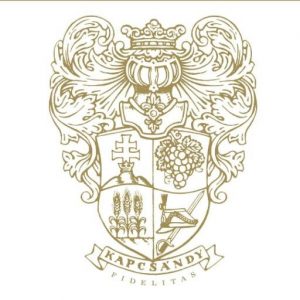 After fleeing his homeland in the days after the brutal crushing by the Soviet Army of the 1956 Hungarian Revolution (for more details, see Lou’s biography), Lou Sr. came to America and eventually settled in the San Francisco Bay Area. He married Roberta Henson in 1964, eventually settled in Seattle, Washington at the end of 1973, with their son, Louis Jr.
After fleeing his homeland in the days after the brutal crushing by the Soviet Army of the 1956 Hungarian Revolution (for more details, see Lou’s biography), Lou Sr. came to America and eventually settled in the San Francisco Bay Area. He married Roberta Henson in 1964, eventually settled in Seattle, Washington at the end of 1973, with their son, Louis Jr.
As Lou began his working career in the chemical engineering and manufacturing fields, his fondness for the best wines produced in the world grew. Through colleagues working in the wine business, he began sourcing the finest wines of France. Almost simultaneously, he began socializing and advising an up-and-coming group of Washington entrepreneurs who would become early icons of the Washington State wine industry.
In 1998, on a visit to Bordeaux, France, Lou and Bobbie experienced a seminal moment that ironically set them on the path of being vineyard owners themselves. With great anticipation, Lou and Bobbie arrived at the centuries-old estate Leoville Las Cases (St. Julien), on a beutiful summer day, on invite for a private luncheon hosted by the estates’ patriarch, Michel Delon. Over the course of the next five hours they were astounded by Mr. Delon’s warmth and generosity, as was Mr. Delon fascinated by Lou’s encyclopedic knowledge of not just the wines and history of Leoville Las Cases and Bordeaux, but of Burgundy, Champagne and the American estates and their terriors Lou was convinced could rival their hallowed French counterparts.
After returning from France, Lou and Bobbie began discussing their dreams for his post retirement from the General Contracting business planned for 2003. They were planning to put together a wine based business that could be done in partnership with their son Louis, Jr., and wanted to retire in Napa Valley, CA.
During the early days of touring for-sale properties, Louis Jr., visited his parents to tour potential sites. The true genesis of Kapcsandy Family Winery (and vineyard), began taking shape through marathon discussions centering on the father and son’s burgeoning idea of partnering in a venture together. An initial opportunity through contacts made on the 1998 visit to Bordeaux culminated in Lou and Louis travelling to Bordeaux in March, 2000, for en primeur events. After several days tasting the 1999 vintage, a decision was made to launch a modest import company (Grand Cru Imports LLC) to import Bordeaux wines into the USA. Thereafter, Louis Jr., remained in Bordeaux for the following nine months to stabilize the venture and develop the necessary network for the business.
In January 2000 to the whole family’s utter surprise they came upon a famous 20 acre parcel with it’s vineyard ripped out after Phylloxera destroyed it in 1999. In May, 2000 they closed escrow on the former Beringer Estate State Lane vineyard that was the home for many years of the Private Reserve Cabernet Sauvignon program.
The Kapcsandy’s embarked upon a complete replant of their vineyard site to 15 specific blocks, primarily Cabernet Sauvignon and Merlot. However, for one full year before setting in rootstocks, the entire field was seeded to a safflower-mix, and then tilled into the dirt in order to encourage an invigoration of nutrients and also installed a major drainage field before the re-planting.
Within three days of harvest 2005, a state of the art winery was completed on the property, to allow for maximum precision throughout the winemaking process.
The best, as they say, is yet to come
Vineyard History
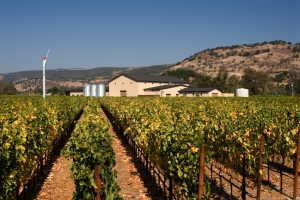 The State Lane Vineyard was made famous by Beringer Estate as one of the original components of their Private Reserve Cabernet Sauvignon program. In 1976 they signed a 30-year lease and planted a 16-acre vineyard with Roy Raymond (later of Raymond Cellars). In 1999 Phylloxera destroyed the vineyard and it had to be ripped out. In 2000, our family purchased the property. Upon taking ownership of the vineyard, we conducted extensive soil and microclimate tests, discovering in the process how extraordinary the vineyard site is. In 2002, the entire vineyard was replanted to 5 blocks of Merlot, 7 blocks of Cabernet Sauvignon and 1 block each of Cabernet Franc and Petit Verdot, utilizing specific rootstocks and varietal clones to optimize the terroir. These blocks range from as small as 0.2 acres to as large as 1.73 acres, and are very tightly spaced. We are planted on 16-acres to 60% Cabernet Sauvignon 30% Merlot, 8% Cabernet Franc and 2% Petit Verdot.
The State Lane Vineyard was made famous by Beringer Estate as one of the original components of their Private Reserve Cabernet Sauvignon program. In 1976 they signed a 30-year lease and planted a 16-acre vineyard with Roy Raymond (later of Raymond Cellars). In 1999 Phylloxera destroyed the vineyard and it had to be ripped out. In 2000, our family purchased the property. Upon taking ownership of the vineyard, we conducted extensive soil and microclimate tests, discovering in the process how extraordinary the vineyard site is. In 2002, the entire vineyard was replanted to 5 blocks of Merlot, 7 blocks of Cabernet Sauvignon and 1 block each of Cabernet Franc and Petit Verdot, utilizing specific rootstocks and varietal clones to optimize the terroir. These blocks range from as small as 0.2 acres to as large as 1.73 acres, and are very tightly spaced. We are planted on 16-acres to 60% Cabernet Sauvignon 30% Merlot, 8% Cabernet Franc and 2% Petit Verdot.
All of our wines are Estate Grown & Bottled and all carry the vineyard designation of State Lane Vineyard. Our first commercial vintage (2004), was produced by Helen Turley. For the 2005/6 vintages, Helen’s protege Rob Lawson (Napa Wine Company), was hired, along with Denis Malbec, from Chateau Latour, Pauillac, to oversee winemaking duties. As of 2007, Denis Malbec became our sole winemaking consultant. In the spring of 2016 we lost Denis Malbec to a tragic auto accident.
In the summer of 2016 we brought in Anthony Arcudi to be our winemaking consultant. For the past 9 years Tony has been an assistant to famous winemaker Heidi Peterson Barrett. Lou and Louis Jr., continue to be intimately involved in all decisions from the vineyard, to winemaking to blending trials and to bottling of all of the wines.
Vineyard Management Philosophy
 Looking across the State Lane vineyard one immediately senses that the vineyard is different. Cultivated with passion and a singular vision, the 15 acres are meticulously hedged and maintained. There is continuity in the way the vines are planted, cared for and harvested that will insure that there is unwavering quality of grapes for each vintage.
Looking across the State Lane vineyard one immediately senses that the vineyard is different. Cultivated with passion and a singular vision, the 15 acres are meticulously hedged and maintained. There is continuity in the way the vines are planted, cared for and harvested that will insure that there is unwavering quality of grapes for each vintage.
We know that it’s an old “Cliché” that great winemaking begins in the vineyard. However, it is true and we believe in it and we practice it. In other words “We walk the talk” with fervent passion.
Ilsley Vineyard Management does all of the farming from pruning to harvesting. They share our phylosophy about how sacred the vineyard is and how it is the most important part of a great bottle of wine.
From the moment we were blessed with the opportunity to purchase State Lane Vineyard we dedicated ourselves to maximize the soil, the soul, the spirit and the proprietors’ fanatical commitment to quality and the expression of this famous vineyard in every single bottle that will be produced.
Grape Growing Philosophy
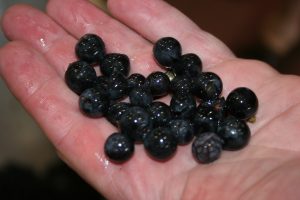 The vineyard is planted 4-5 times more densely than is typical for Napa Valley. We have 2,640 vines/acre compared to the more typical 660 vines/acre. In fact we’re planted more like the “First Growths” in Bordeaux at 6,500 – 7,000 vines/hectare. At the higher density spacing the vines produce smaller berries with higher skin-to-juice ratios and more intense flavors and aromas.
The vineyard is planted 4-5 times more densely than is typical for Napa Valley. We have 2,640 vines/acre compared to the more typical 660 vines/acre. In fact we’re planted more like the “First Growths” in Bordeaux at 6,500 – 7,000 vines/hectare. At the higher density spacing the vines produce smaller berries with higher skin-to-juice ratios and more intense flavors and aromas.
The higher density spacing also induces natural stressing of the vines without artificial human intervention, like shutting watering off or withholding critical nutrients.
We aim to grow grape clusters with uniform small berries that will give our wines intense flavors with complex aromas and a full bodied structure that will be in harmonies balance.
We take extraordinary measures to make sure that only the very best grape clusters are harvested, leaving many clusters out in the vineyard. We normally drop around 5 tons/acre and only bring in around 3-3-1/2 tons/acre.
Grape Growing Philosophy
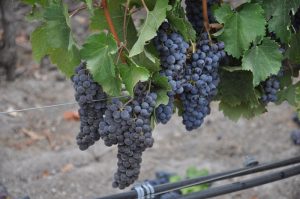 The vineyard is planted 4-5 times more densely than is typical for Napa Valley. We have 2,640 vines/acre compared to the more typical 660 vines/acre. In fact we’re planted more like the “First Growths” in Bordeaux at 6,500 – 7,000 vines/hectare. At the higher density spacing the vines produce smaller berries with higher skin-to-juice ratios and more intense flavors and aromas.
The vineyard is planted 4-5 times more densely than is typical for Napa Valley. We have 2,640 vines/acre compared to the more typical 660 vines/acre. In fact we’re planted more like the “First Growths” in Bordeaux at 6,500 – 7,000 vines/hectare. At the higher density spacing the vines produce smaller berries with higher skin-to-juice ratios and more intense flavors and aromas.
The higher density spacing also induces natural stressing of the vines without artificial human intervention, like shutting watering off or withholding critical nutrients.
We aim to grow grape clusters with uniform small berries that will give our wines intense flavors with complex aromas and a full bodied structure that will be in harmonies balance.
We take extraordinary measures to make sure that only the very best grape clusters are harvested, leaving many clusters out in the vineyard. We normally drop around 5 tons/acre and only bring in around 3-3-1/2 tons/acre.

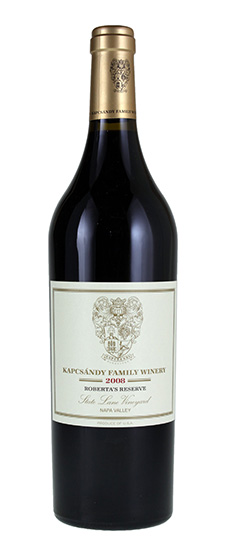
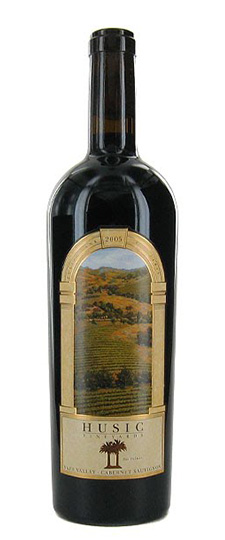
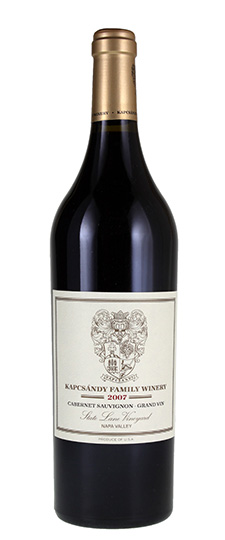
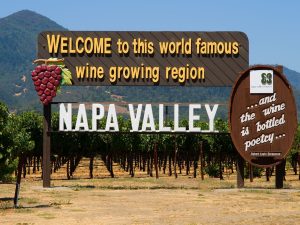

![Amuse Bouche, Napa Valley [Merlot/Cabernet Franc] 2012](https://www.wineyou.com/wp-content/uploads/2017/06/Amuse-Bouche-Napa-Valley-MerlotCabernet-Franc-2012.jpg)
